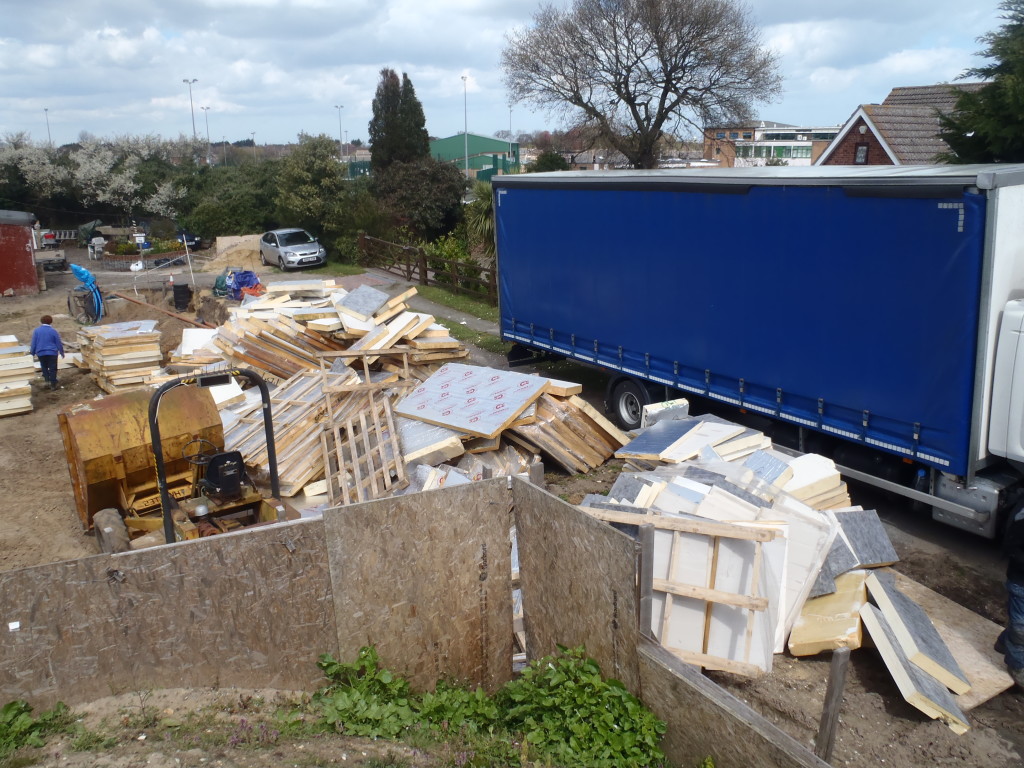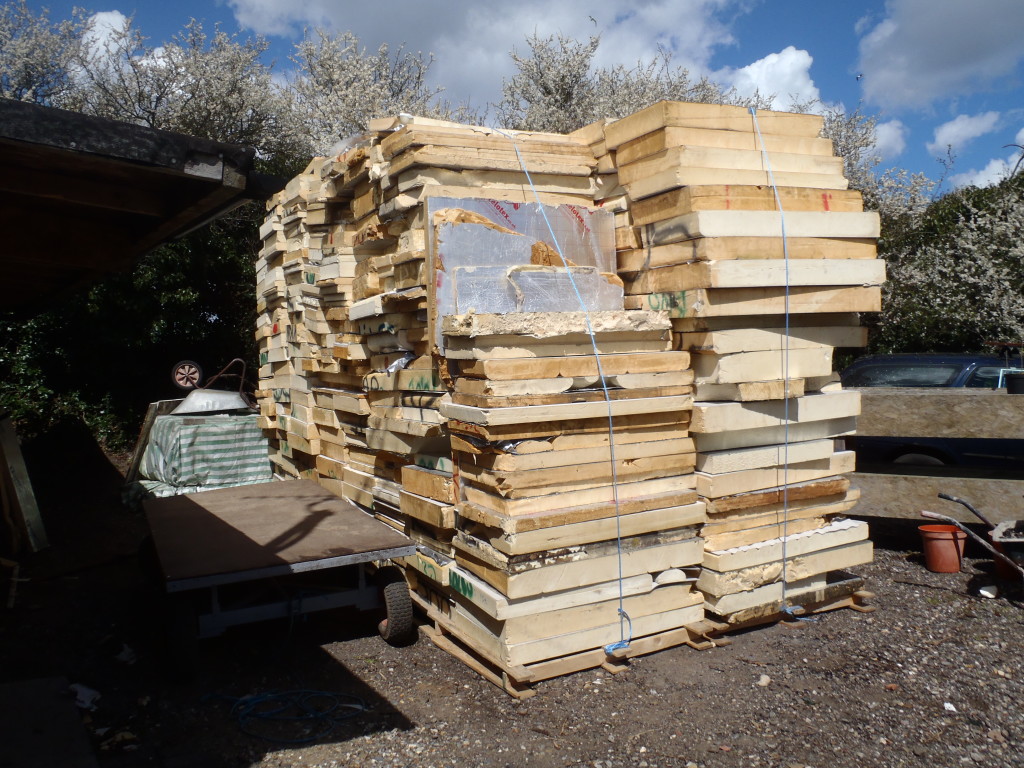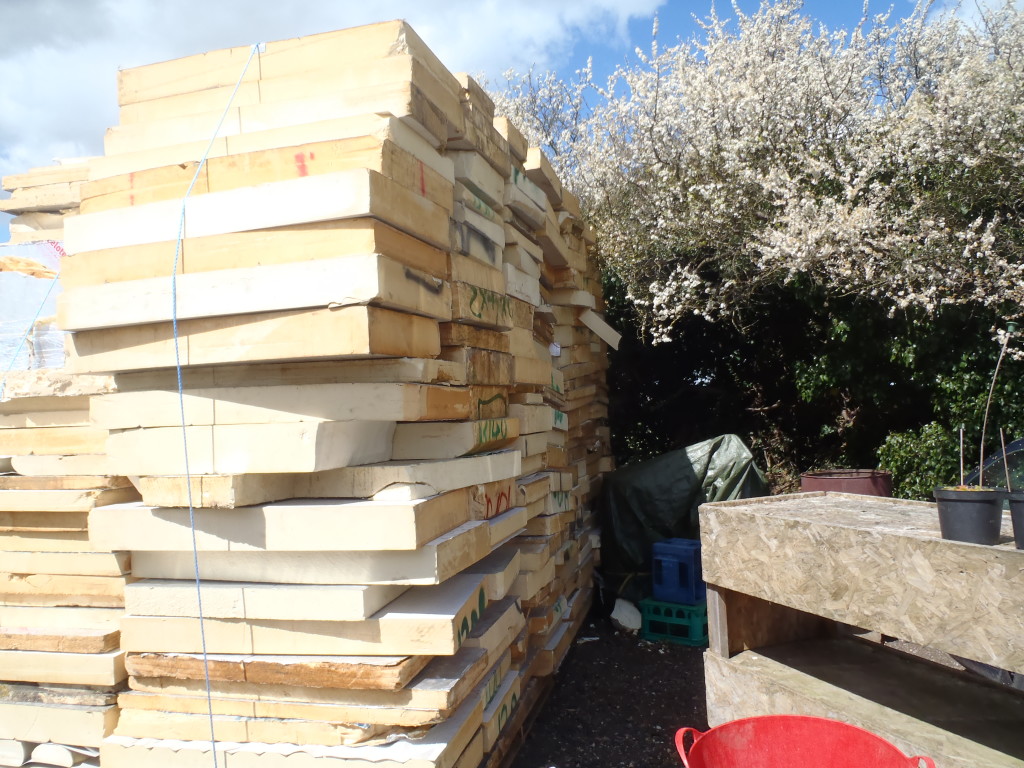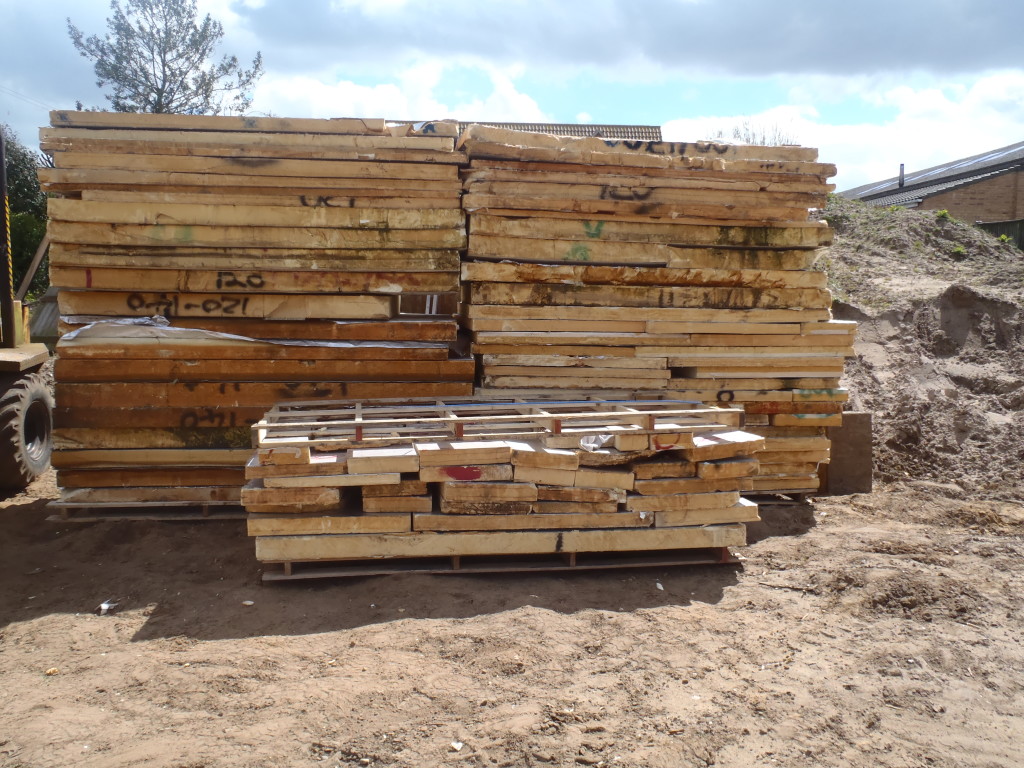Our order of ?seconds? of PU (polyurethane) insulation panels arrived today!
It came on 14 pallets on a long lorry that managed to drive backwards down
our Loke! They were a variety of sizes and thickness of rejected and damaged
foam panels, making up a pallet load of 8feet by 4feet and about 4 feet
tall. Since we didn?t have a fork lift truck on hand (huh!), we had to push
the pallets sideways off the lorry and send them crashing down to the ground
and rolling them over into our hole!! We weren?t too concerned about causing
more damage as all the panels will be needing sorting out and cutting bad
bits off etc.
We have now stacked up all the insulation into neat(ish) stacks, a large stack beside the storage shed of smaller pieces (nearly all of the pieces delivered are more than 600mm x 1200mm) and a smaller stack at the end of the hole near the earth mound.
The first use of these panels will be the underground Energy Modules which
are large hot water tanks to store the heat collected from the Thermal Solar
Panels on our garage roof. Each of the 5 Energy Modules will be wrapped in
200mm thick insulation and then buried into the ground under the house. We
discovered these source of insulation panels and it seems that there are
lots of rejected insulation panels and so a niche market has sprung up to
buy these rejects from the factories, take off the good bits (to sell at a
higher ?normal? price of about £100 per cubic metre) and put the rubbishy
bits together to sell at an amazingly low price of about £10 per cubic
metre!! We don?t mind buying these foam panels as it is a very similar price
to Glass Wool, which is what we were considering using in the first place,
but being PU foam, it is twice as good as glass wool in terms of thermal
resistance so having ?bad? bits on them wouldn?t matter, because we are
using multiple layers of these panels to fill our walls and roof spaces. We
would of course spray in fresh 2 part PU foam to block any air gas or cold
bridges.
The other advantage of these rigid panels over glass wool, is that we will
KNOW for certain that they will hold upright inside the walls, or in the
sloping roof spaces, without collapsing after a few years. The wool is not
very strong and having such a large quantity may cause problems of
compression over the years of the life of the building.
So we are rather pleased to discover this source of insulation material, it
requires more work and time to sort them out, but that is the point of our
“Real” self build project, we are doing everything ourselves and time and
labour is no cost to us, hence saving huge amount of money and benefit from
this massive amount of insulation in our walls and roof!!



